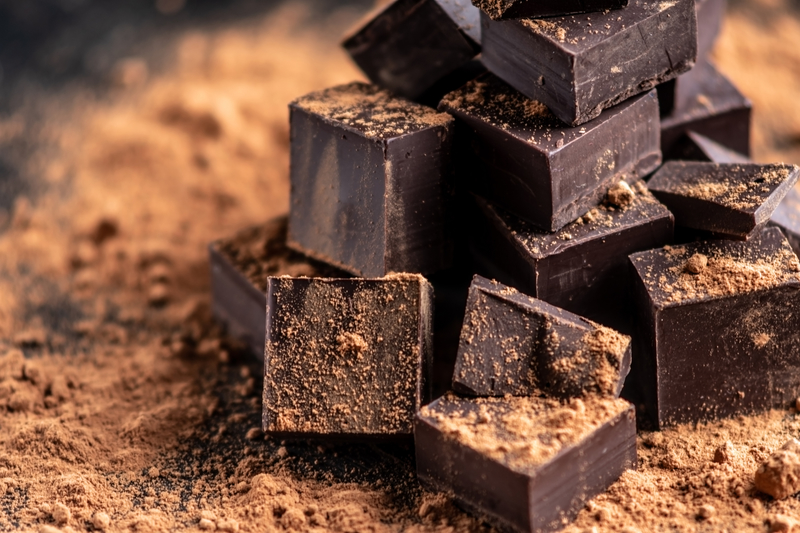10 Foods High in Magnesium You NEED in Your Diet (see list)

The mineral magnesium is directly and intimately involved in how you feel, move, and look. It’s essential for bone health, healthy blood pressure, cardiovascular health, digestive health, blood sugar management, stress management, mood and well-being, sleep quality, muscle performance, inflammatory response, and more. That’s why it is CRUCIAL to be adding foods high in magnesium to your diet.
Despite how important it is, many folks—upwards of 75% of the population—miss the mark when it comes to the recommended daily intake (RDI) of this all-important micronutrient (that’s 320 to 360 mg per day for women and 420 mg per day for men).
Fortunately, a number of foods (that, yes, you’ll actually eat) provide magnesium, and here is a list of my top 10 foods high in magnesium. When you incorporate more of these into your dietary routine, you can easily get plenty of this vital nutrient, which is mission-critical to optimizing your health.
10 Foods High in Magnesium
1. Spinach
When it comes to boosting nutrition, one of the easiest things to do is reach for more dark green leafy vegetables, of which spinach is one of the most reliable, versatile, and nutrient-dense selections. And magnesium is no exception. Just a single cup of cooked spinach provides 75 mg (18% of the RDI). On a volume basis, raw spinach provides much less, at 25 mg per cup, but that still adds up. Swiss chard, beet greens (see below), and collard greens are also great choices.
2. Pumpkin Seeds
Seeds of all sorts are little nutrition powerhouses, and when it comes to magnesium, pumpkin is a champ. A single ounce provides 160 mg (38% of the RDI). Other seeds high in magnesium include sesame, and to a lesser extent, flax and chia, which are also high in fiber, antioxidants, iron, and of course, omega-3 fatty acids.
3. Brazil Nuts
Not only do these rich nuts provide 125 mg of magnesium, just a ¼-cup serving also provides 100% of the RDI for selenium. And like most nuts, they’re a rich source of fiber and healthy fats. Almonds (see below) and cashews are also packed with magnesium.
4. Legumes
Another great reason for Meatless Mondays: more legumes! With up to 120 mg, or 30% of the RDI in magnesium, legumes—including beans, lentils, peanuts, and peas—are nutrient powerhouses that provides a wide range of important vitamins and minerals, including potassium and iron, as well as a great source of plant-based protein, and of course, fiber.
5. Amaranth
You may not be as familiar with this ancient grain, but it has a remarkable nutrition profile especially when you compare it to other foods high in magnesium. To start, you’ll find 120 mg of magnesium (in ¼ cup, uncooked) along with plenty of protein and fiber in one cup. It’s also rich in manganese, phosphorus, iron, selenium, and copper. No wonder it was once a staple food in the ancient Inca, Maya, and Aztec civilizations. In general, whole grains are good sources of magnesium, and teff, quinoa, and sorghum are other nutrient-dense options.
6. Beet Greens
The next time you’re preparing beets, hold onto those green tops! These leafy dark greens are loaded with nutrients, including 100 mg of magnesium plus antioxidants, vitamin A, vitamin C, vitamin B6, potassium, copper, calcium, iron, and manganese. For those of us who live in cooler climates, beets are a favorite for the garden because they have a longer-than-normal growing season and are cold resistant. And if they don’t fit in the menu in the next couple of days, they also freeze well for soups in the fall and winter!
7. Almonds
So much nutrition in such a small package, almonds pack a range of nutrients, including 95 mg of magnesium. Almonds are also rich in fiber, protein, antioxidants, and healthy fats along with vitamin E, manganese, copper, and vitamin B2. Even though their unique natural package makes them somewhat resistant to digestion, keep in mind that they are also calorie dense; in other words, a little (e.g., thumb-size portion) goes a long way, especially when you take your time and chew thoroughly.
8. Buckwheat
While “wheat” is included in the name, buckwheat isn’t wheat—or even a grain at all—but rather a seed from the Fagopyrum esculentum plant. And it’s a great source of nutrition. With 65 mg (16% of the RDI) of magnesium, buckwheat is also rich in protein, fibers, antioxidants, and nutrients like manganese, phosphorus, niacin, zinc, folate, and vitamin B6.
9. Dark Chocolate
Praise be! With 64 mg (16% of the RDI) in a 1-ounce square, dark chocolate is not only a quality source of magnesium but it’s also loaded with antioxidants and is rich in iron, copper, manganese, and even prebiotic fiber. Oh, and of course, it tastes uh-mazing! Just make sure you’re going with dark chocolate, which means that it’s made with at least 70% cocoa. Then, enjoy responsibly. (Sorry, this is NOT a license to eat a whole bar—at least routinely.)
10. Salmon
A number of fatty fish—so important for ensuring we consume enough omega-3 fatty acids—are also relatively high in magnesium. That includes salmon, which provides 29 mg, or 7% of the RDI, in magnesium (per 3 ½-ounce serving). That same portion of salmon is also packed with 20 grams of protein, along with plenty of potassium, selenium, and B vitamins.
Foods High in Magnesium: A Recap
Of course, consuming enough magnesium is important, but you also want to stave off the loss of magnesium, which can be caused by an unbalanced calcium intake, overconsumption of coffee and soda, too much salt or sugar, and over imbibing in adult drinks.
And let’s face it, even though that’s a pretty robust list of foods high in magnesium, chances are you’re still bound to miss the mark—at least from time to time. Along those lines, a high-quality magnesium powder can help ensure you’re topping off your levels of this critical nutrient on a routine basis, which is essential to supporting optimal health and wellness.






